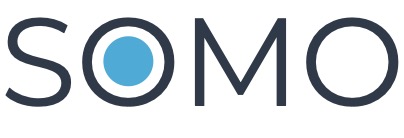Citizen Generated Data (CGD)
1. Overview of Potential Funding Sources for CGD Projects
Securing funding is crucial for the success of CGD projects. There are multiple funding sources available, each with its own advantages, challenges, and requirements.
a. Grants
Grants are one of the most common sources of funding for CGD projects, especially from government agencies, foundations, and international organizations. These are usually awarded based on competitive applications and do not need to be repaid.
- Types of Grants:
- Government Grants: National or local governments offer funding for community projects addressing social, health, or environmental needs.
- Foundation Grants: Nonprofit foundations fund specific causes, such as education, public health, or environmental conservation.
- International Grants: Organizations like the UN or World Bank provide funding to support global development initiatives.
- Key Requirements: Clear project alignment with the grant’s objectives, a well-structured proposal, and measurable impact.
b. Donations
- Individual Donations: Community members, philanthropists, or the general public contribute financially to support a cause they believe in. Fundraising campaigns, both online and offline, can be an effective method for generating individual donations.
- Corporate Donations: Companies may offer donations as part of their Corporate Social Responsibility (CSR) initiatives. Partnerships with businesses can also lead to in-kind support like materials or services.
c. Partnerships
- Public-Private Partnerships (PPP): Collaborations between government agencies and private-sector organizations to fund projects of mutual interest. For example, a health-focused CGD project might partner with a healthcare company for both funding and technical expertise.
- Nonprofit Partnerships: Collaborating with larger NGOs or international organizations can bring in shared resources and larger funding pools, while also expanding the project's scope and impact.
d. Crowdfunding
Crowdfunding platforms such as GoFundMe, Kickstarter, or GlobalGiving enable organizations to raise small amounts of money from a large number of people, usually via online platforms. This strategy is particularly effective when there is a clear, compelling narrative or a time-sensitive campaign.
- Advantages: Direct engagement with supporters, access to a wide audience, and flexibility in campaign structure.
- Challenges: Requires significant marketing and communication efforts to succeed.
e. In-Kind Support
Non-monetary donations such as materials, equipment, or volunteer services can be a valuable supplement to financial resources. These contributions often come from local businesses, community members, or partner organizations.
2. Key Components of an Effective Grant Proposal
Writing a compelling grant proposal is essential for securing funding from grant-making institutions. Below are the critical components:
a. Articulating the Need
- Problem Statement: Clearly define the community issue your project aims to address. Use data, research, and anecdotal evidence to demonstrate the need.
- Local Context: Explain why this problem is particularly relevant to your specific community, incorporating cultural, social, and economic factors.
b. Describing the Project
- Project Objectives: Define SMART (Specific, Measurable, Achievable, Relevant, and Time-bound) goals for your project. These should directly address the problem identified in the need statement.
- Project Activities: Provide a detailed description of the actions and interventions your project will undertake. This should include a timeline, methodologies, and the resources required.
- Target Audience: Specify the population your project will serve, along with any demographic or geographic considerations.
c. Demonstrating Potential Impact
- Outcomes and Outputs: Clearly differentiate between the immediate outputs (e.g., number of people trained) and long-term outcomes (e.g., improvement in community health or literacy rates).
- Sustainability: Explain how the project will continue to benefit the community after the funding period ends, whether through partnerships, capacity building, or additional fundraising.
d. Budget and Financials
- Detailed Budget: Break down the total project costs into direct and indirect costs. Ensure that the budget is realistic and aligns with the project’s activities.
- Funding Plan: Mention any other confirmed or potential funding sources, in-kind contributions, or volunteer support that will supplement the grant.
e. Evaluation and Reporting
- Monitoring and Evaluation Plan: Outline how the project’s progress will be measured, including key performance indicators (KPIs) and the tools or methods that will be used for data collection.
- Reporting: Describe how you will keep the donor informed about progress, including regular updates, financial reports, and final outcomes.
3. Tips for Managing Relationships with Donors and Partners
Once funding is secured, maintaining strong relationships with donors and partners is critical for ongoing support. Effective communication and accountability help build trust and sustain these relationships.
a. Ongoing Communication
- Regular Updates: Keep donors informed about the project's progress through newsletters, emails, or periodic reports. Highlight key milestones, success stories, and challenges.
- Personalized Engagement: Tailor your communication to each donor’s interests. If a donor funded a specific aspect of the project, provide detailed updates on that area.
b. Reporting on Progress and Outcomes
- Transparency: Ensure that financial reports are accurate, timely, and show how funds are being used. Clearly report on project outcomes, both successes and areas for improvement.
- Impact Reporting: Emphasize the positive change that the donor’s contribution has enabled. Use statistics, testimonials, and case studies to illustrate the impact on the community.
c. Demonstrating Accountability
- Compliance with Donor Guidelines: Follow all reporting and financial guidelines set by the donor. This includes submitting reports on time and using funds only for agreed-upon purposes.
- Clear Financial Management: Keep meticulous financial records, ensuring that all expenditures are trackable. This not only ensures accountability but also makes it easier to apply for future funding.
d. Building Long-Term Partnerships
- Thank Donors and Acknowledge Contributions: Show gratitude through personalized thank-you notes, acknowledgement in reports, or public recognition (if appropriate).
- Invite Donors to Events: Engaging donors in your community events or project milestones allows them to see firsthand the impact of their contributions.
- Nurture Relationships: Schedule periodic check-ins to update donors and partners on new initiatives, and seek their input on future projects. Strong relationships can lead to continued funding and even new opportunities.


